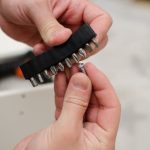Are you looking to decrease your energy bills and reduce your carbon footprint? Learn how to improve your home energy efficiency rating and make your living space more environmentally friendly and cost-effective.
Understanding your home energy efficiency rating is crucial in identifying where energy is being wasted and how you can make improvements. By assessing the current state of your home’s energy efficiency, you can take targeted steps to enhance its performance.
Improving energy efficiency in your home not only benefits the environment but also saves you money in the long run. From conducting an energy audit to sealing air leaks and insulating your home, there are various ways to boost efficiency and decrease energy consumption. By investing in renewable energy sources and utilizing smart home technology, you can further optimize your living space for maximum efficiency.
Importance of Improving Energy Efficiency in Your Home
Improving energy efficiency in your home is crucial not only for reducing your carbon footprint but also for saving money on utility bills. By making your home more energy-efficient, you can reduce the amount of energy consumed, leading to lower electricity and heating/cooling costs. Additionally, improving your home’s energy efficiency rating can increase the overall comfort and value of your property.
To improve your home energy efficiency rating, consider implementing the following measures:
- Sealing air leaks: Identify and seal any gaps or cracks around doors, windows, and walls to prevent heat loss or gain. This can be done using weatherstripping, caulking, or spray foam insulation.
- Insulating: Proper insulation in attics, walls, and floors can significantly reduce the transfer of heat through these surfaces. Consider adding or upgrading insulation to improve your home’s thermal performance.
Upgrading to energy-efficient appliances and lighting is another effective way to boost your home’s energy efficiency rating. Energy Star-rated appliances consume less electricity compared to their traditional counterparts, helping you save on your monthly utility expenses. Similarly, replacing incandescent bulbs with LED or CFL lights can result in significant energy savings over time.
- Investing in renewable energy sources like solar panels can further enhance your home’s energy efficiency rating while reducing dependence on grid electricity. Solar power harnesses clean and sustainable energy from the sun to generate electricity for your household needs.
- Utilizing smart home technology such as programmable thermostats, smart lighting systems, and automated control devices can optimize energy usage in your home. These advanced technologies allow you to monitor and adjust energy consumption remotely for maximum efficiency.
By incorporating these strategies into your home improvement projects, you can effectively enhance its energy efficiency rating while enjoying long-term cost savings benefits. Remember that every small step taken towards improving energy efficiency contributes to a greener environment and a more sustainable future for all.
Conducting an Energy Audit
An energy audit is a valuable tool in assessing your home’s current energy efficiency and identifying areas for improvement. By conducting an energy audit, you can determine how much energy your home is currently using and where it may be wasted.
This process involves a thorough evaluation of your home’s insulation, heating and cooling systems, appliances, lighting, and more. Understanding the results of an energy audit can provide insight into how to best prioritize upgrades for maximum impact on your home’s energy efficiency rating.
Benefits of Conducting an Energy Audit
One of the key benefits of conducting an energy audit is that it allows you to pinpoint specific areas in your home where improvements can be made to enhance its overall efficiency. From identifying air leaks to assessing the performance of your HVAC system, an energy audit provides valuable information on where you can focus your efforts to make a meaningful impact.
Additionally, by uncovering potential inefficiencies, you can ultimately save money on your utility bills by addressing these issues and improving the overall performance of your home.
Professional vs. DIY Energy Audits
While some homeowners may opt for a do-it-yourself approach to conducting an energy audit, hiring a professional auditor can provide even more detailed insights and recommendations. Professional auditors have specialized equipment and expertise to thoroughly assess your home’s energy usage and make tailored suggestions for improvements.
However, for those looking to cut costs, DIY audits can still offer valuable information through simple steps like inspecting windows and doors for drafts, checking insulation levels, and evaluating appliance efficiency. Ultimately, whether you choose a professional or DIY approach, conducting an energy audit is a crucial first step in improving your home’s energy efficiency rating.
Sealing Air Leaks and Insulating Your Home
When it comes to improving your home energy efficiency rating, one of the most effective steps you can take is to seal air leaks and properly insulate your home. Air leaks in your home can lead to significant energy waste as conditioned air escapes, causing your heating and cooling systems to work harder to maintain a comfortable temperature.
By sealing these leaks and adding insulation, you can reduce energy consumption, lower utility bills, and improve the overall comfort of your home.
To effectively seal air leaks in your home, start by identifying common trouble spots such as windows, doors, electrical outlets, and attic hatches. Use weather stripping or caulking to seal gaps and cracks around these areas. Additionally, consider adding insulation to key areas of your home such as attics, walls, floors, and basements. Proper insulation can help regulate indoor temperatures more efficiently and reduce the strain on your HVAC system.
Here are some specific tasks you can tackle to improve the air tightness and insulation of your home:
- Check for drafts around windows and doors
- Seal gaps around pipes, ducts, and vents
- Add weather stripping or door sweeps
- Insulate hot water pipes
- Install insulated curtains or blinds
- Consider upgrading to double-pane windows
By taking these measures to seal air leaks and enhance insulation in your home, you can significantly boost its energy efficiency rating while also creating a more comfortable living environment for you and your family.
Upgrading to Energy-Efficient Appliances and Lighting
When considering upgrading to energy-efficient appliances, focus on those that consume less electricity while still meeting your household needs. Look for refrigerators, washing machines, dishwashers, and air conditioning units with high Energy Star ratings. These appliances are designed to use minimal energy without sacrificing performance. Similarly, swapping out traditional incandescent light bulbs with LED bulbs can also lead to substantial savings in the long run.
In addition to lower energy consumption, upgrading to energy-efficient appliances and lighting can also contribute positively to the environment by reducing greenhouse gas emissions. As climate change continues to be a critical global issue, every effort at the individual level counts towards creating a more sustainable future.
By making these changes in your home, not only do you improve your own living conditions by lowering utility bills but you also play a part in minimizing your carbon footprint on the planet.
| Benefits of Upgrading Appliances and Lighting | Key Takeaways |
|---|---|
| Reduce electricity consumption | Lower utility bills in the long run |
| Extended lifespan of appliances | Contribute positively to environmental conservation |
| Improved performance with reduced energy usage | Create a more sustainable future for generations |
Investing in Renewable Energy Sources
Introduction to Renewable Energy
Renewable energy sources are becoming increasingly popular as people look for ways to reduce their carbon footprint and lower their energy bills. Incorporating renewable energy into your home not only helps the environment but can also improve your home energy efficiency rating. By utilizing resources like solar panels, wind turbines, or geothermal heating systems, you can generate clean, sustainable power that reduces your reliance on traditional fossil fuels.
Benefits of Renewable Energy
Investing in renewable energy sources offers a myriad of benefits beyond just improving your home’s energy efficiency rating. For starters, renewable energy is a much more sustainable option compared to non-renewable resources like coal or oil.
By harnessing the power of the sun, wind, or earth, you can significantly decrease your carbon emissions and contribute to combating climate change. Additionally, renewable energy systems often require less maintenance and have longer lifespans than traditional heating and cooling systems, leading to cost savings in the long run.
Types of Renewable Energy Systems
There are various types of renewable energy systems that homeowners can consider investing in to improve their home’s energy efficiency rating. Solar panels are one of the most popular options and can be installed on rooftops to capture sunlight and convert it into electricity. Wind turbines are another effective way to generate power by harnessing the wind’s kinetic energy.
Geothermal heat pumps utilize the Earth’s constant temperature below the surface to heat and cool homes efficiently. Each type of renewable energy system has its unique advantages and can be tailored to suit different homes and locations.
Utilizing Smart Home Technology
In today’s technology-driven world, one of the most effective ways to improve your home energy efficiency rating is by incorporating smart home technology. Smart home devices such as thermostats, lighting systems, and plugs allow you to control and monitor your energy usage remotely.
For example, smart thermostats can learn your heating and cooling preferences and adjust the temperature automatically, leading to significant energy savings over time. By using these devices, you can better manage your energy consumption and reduce unnecessary usage.
Another way smart home technology can improve your home’s energy efficiency is through the use of sensors. These sensors can detect when a room is empty and adjust the lighting or temperature accordingly. This helps prevent wastage of electricity when no one is present in a particular area of the house. Additionally, some smart devices offer real-time monitoring of energy usage, allowing you to identify any areas where you can make improvements for increased efficiency.
Furthermore, integrating smart home technology with renewable energy sources such as solar panels or wind turbines can maximize energy efficiency in your home. By connecting these systems to your smart devices, you can track the production and consumption of renewable energy, optimize their use based on availability, and further reduce reliance on traditional power sources. Overall, utilizing smart home technology provides a convenient and effective way to enhance your home’s energy efficiency rating while also reducing utility costs.
| Smart Home Technology Benefits | Details |
|---|---|
| Remote Control | Allows monitoring and controlling of energy usage from anywhere |
| Sensors | Detects occupancy levels for efficient lighting and temperature adjustments |
| Integration with Renewable Energy | Maximizes renewable energy use for improved overall efficiency |
Government Incentives and Rebates for Energy Efficiency Improvements
In conclusion, improving your home energy efficiency rating is not only beneficial for the environment but also for your wallet. By understanding your current rating and taking steps to improve it, you can reduce energy waste and lower your utility bills. Conducting an energy audit is a great starting point to identify areas where improvements can be made, such as sealing air leaks and adding insulation.
One of the most effective ways to improve your home’s energy efficiency is by upgrading to energy-efficient appliances and lighting. Not only do these upgrades use less energy, but they also last longer and perform better than traditional options. Investing in renewable energy sources, such as solar panels or wind turbines, is another great way to reduce your home’s carbon footprint and decrease your dependence on fossil fuels.

Furthermore, utilizing smart home technology can help you better manage your energy usage by allowing you to control devices remotely and monitor your consumption in real-time. And don’t forget to explore government incentives and rebates available for energy efficiency improvements.
These programs can provide financial assistance or tax credits to offset the costs of making your home more energy efficient. Overall, by following these tips on how to improve your home energy efficiency rating, you can make a positive impact on the environment while saving money in the long run.
Frequently Asked Questions
How Can We Improve the Energy Efficiency of Our Home?
Improving the energy efficiency of our home can be done in various ways. One way is by ensuring proper insulation throughout the house to prevent heat loss. Upgrading to energy-efficient appliances and lighting can also help reduce energy consumption. Additionally, sealing any air leaks or drafts can make a significant difference in energy efficiency.
Which Strategy Most Effectively Increases a Home’s Energy Efficiency?
The strategy that most effectively increases a home’s energy efficiency is a combination of different approaches. Insulating the home properly, upgrading to Energy Star-rated appliances, using smart thermostats to regulate heating and cooling, and installing solar panels are all effective ways to increase energy efficiency. Furthermore, maintaining regular HVAC system maintenance can also ensure optimal performance.
What Is a Low Cost Way to Make Your Home More Energy Efficient?
A low-cost way to make your home more energy-efficient is by implementing simple changes that do not require significant investments. This includes sealing windows and doors with weather-stripping or caulking to prevent air leaks, using programmable thermostats to control heating and cooling when you’re away, replacing air filters regularly to keep HVAC systems running efficiently, and utilizing natural lighting during the day instead of artificial lighting.
Additionally, adjusting the water heater temperature slightly lower can also result in energy savings without costly upgrades.

I’m thrilled to have you here as a part of the Remodeling Top community. This is where my journey as an architect and remodeling enthusiast intersects with your passion for transforming houses into dream homes.





